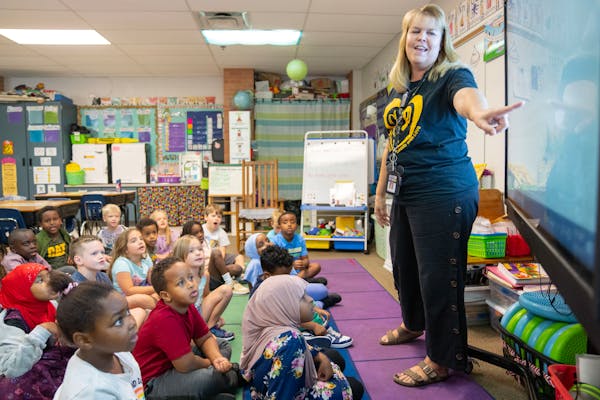The school day begins at 9 a.m. on Wednesdays at Roseville Area High School — as opposed to 8:10 a.m. starts the rest of the week — yet many students still are arriving late.
Time for an intervention. Last week, dozens of kids were steered to the cafeteria, handed scripts and told to phone home with the message: I now plan to be in class on time.
It's all about boosting school attendance in a tough post-pandemic era. In some Minnesota schools, half of the students miss 10% or more of the school year. And attendance has been even worse among some demographic groups.
Attempts to address the issue will likely come to the fore during the approaching legislative session, with at least one education advocacy group making it a priority. Already, several east metro school districts have huddled with Ramsey County Attorney John Choi to consider possible solutions to attendance concerns and the way truancy ripples across other societal issues.
Choi has a role in enforcing truancy laws, but he does not speak in hard-line terms. He wants to see the various players unite and work toward common goals. Of particular concern, he said, is the difficulty tracking students who've left a district and never returned to school.
"There is a very distinct connection, I think, with some of the most serious and violent offenses that have been committed by youth," Choi said last week. "Law enforcement often will ask, 'Where do you go to school?' And many times the kids will look back at the police officer and say, 'I don't go to school.' "
He plans to continue working with the state Department of Education to strengthen data access and perhaps pitch a pilot project for Ramsey County this legislative session.
At the district level, St. Paul and Roseville are employing new strategies to get kids in school and reporting success. Officials with those districts, as well as North St. Paul-Maplewood-Oakdale and West St. Paul-Mendota Heights-Eagan, were among the school leaders to meet with Choi during the fall.
The education advocacy group EdAllies, which works closely with underserved communities, aims to help drive conversation at the State Capitol around lagging test scores and shaky attendance — as well as identifying potential fixes.
At a session kickoff event last week, EdAllies laid out findings that show:
• More than 30% of the state's students were chronically absent in 2021-22 — meaning they missed 10% or more of the school year.
• Nearly half of students living in poverty were not regularly attending school, nor were 40% of Black and Latino students, and more than half of Native students.
• More than half of the students in 78 districts across the state were chronically absent.
Matt Shaver, EdAllies' policy director, said too many students are missing out on free meals, ethnic studies courses and mental health support, all of which were legislative priorities a year ago.
"We're talking about numbers that are not going to fix themselves on their own," he said of the need to dig into the issue. "We are trying to start a conversation."
DFL state Rep. Laurie Pryor, of Minnetonka, who chairs the House Education Policy Committee, said last week via email: "Chronic absenteeism is an issue that we would like to look at this year."
Attendance still lags pre-pandemic levels
In 2021-22, the most recent year for which statewide attendance data is available, just 57% of St. Paul students and 63% of Roseville students were regularly attending school.
St. Paul has put finer points on its 2022-23 data, and it shows that half of Native students and 35% of Black students missed 20 or more days. This year, the district has added an American Indian attendance intervention specialist and seen a slight improvement in the number of kids who attend school regularly, said Kathy Lombardi Kimani, director of the Office of School Support.
On a broader level, St. Paul and Roseville are taking similar approaches to getting kids in class. Attendance teams have been assembled at the schools. Teachers call parents when a student has three unexcused absences. Attendance gains are made a part of individual school improvement plans.
Melissa Sonnek, assistant superintendent of Roseville Area Schools, said some buildings have attendance mentors who reach out to kids to say: "'Hey, we missed you yesterday. We're so glad you're here today,' and kind of help them get caught up," she said.
Roseville Area High School is projecting a 21% drop in unverified absences this year. That translates to students missing an average of about five days in 2023-24, said Principal Jen Wilson, who is in her first year there. She said schools should work "to cultivate joy" so kids want to return each day.
Lombardi said the percentage of St. Paul students who attend school regularly rose in this year's first quarter but was not yet at pre-pandemic levels.
"We are trending in the right direction," she said. "But we are all still working hard to get that number even lower."

Want to share info with the Star Tribune? How to do it securely

'Safe recovery sites' would offer syringes, naloxone and more to people using drugs. The plan could be in peril.
New Minnesota GOP leaders seek peace with party's anti-establishment wing

Who is Republican Lisa Demuth, Minnesota's first House speaker of color?

